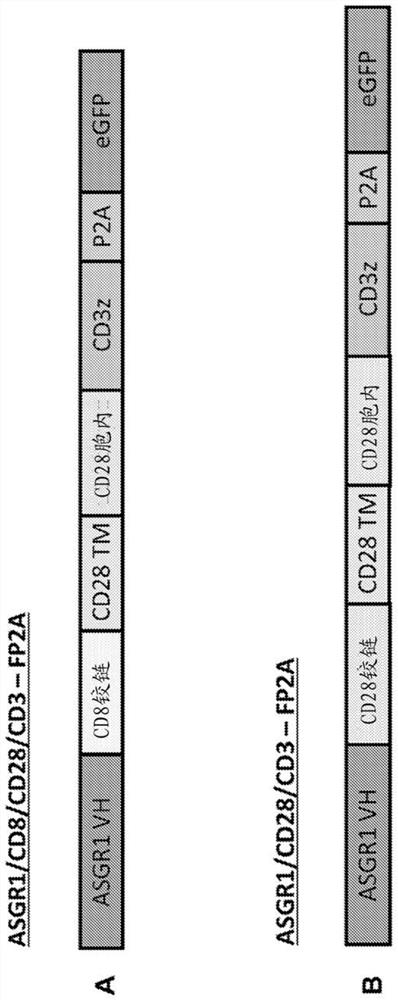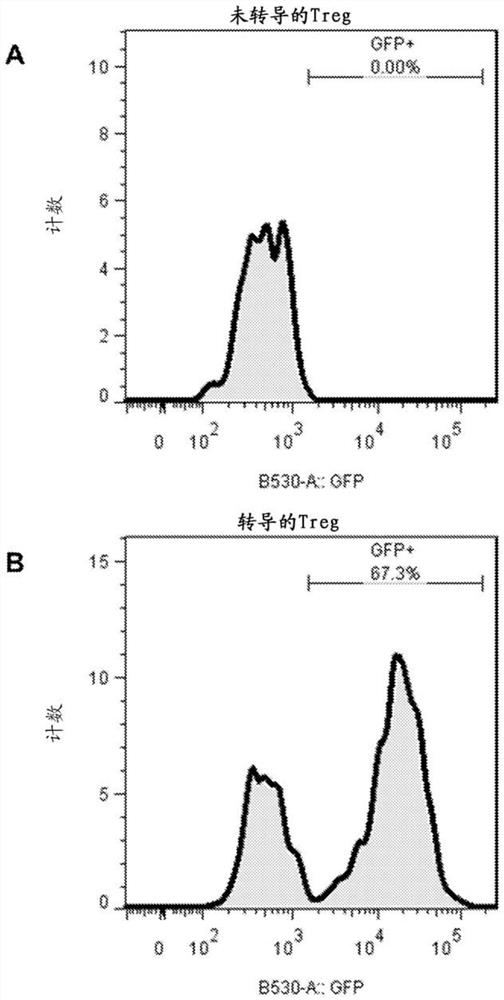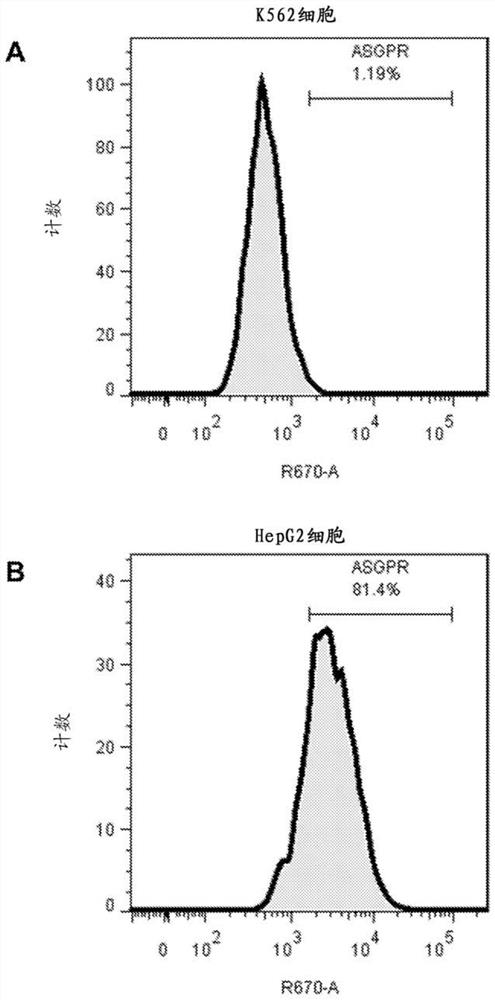Engineered regulatory t cells
An engineering and regulatory technology, applied in animal cells, vertebrate cells, genetically modified cells, etc., can solve problems such as impaired regeneration ability and liver cell aging
- Summary
- Abstract
- Description
- Claims
- Application Information
AI Technical Summary
Problems solved by technology
Method used
Image
Examples
Embodiment 1
[0628] Example 1 - Design of anti-ASGR1 CAR constructs
[0629] Chimeric antigen receptors (CARs) are designed to contain: an antigen recognition domain derived from a single domain antibody (sdAb) known to specifically bind ASGR; a transmembrane domain (TM) derived from CD28 (pp. 153 to 179) amino acid); and an intracellular signaling domain comprising the CD3ζ signaling domain and the CD28 signaling domain. Exemplary constructs are as follows and figure 1 shown.
[0630] Comprising: CD8 leader, ASGR1 VH antigen recognition domain, CD8α hinge domain, CD28 transmembrane, CD28 cytoplasmic signaling domain, CD3z cytoplasmic signaling domain, FP2A domain, anti-ASGR1 CAR construct 1 of GFP (SEQ ID NO:151)
[0631] MALPVTALLLPLALLLHAARPEVQLLESGGGLVQPGGSLRLSCAASGFTFEKYAMAWVRQAPGKGLEWVSRISARGVTTYYADSVKGRFTISRDNSKNTLYLQMNSLRAEDTAVYYCAKHKRHEHTRFDSWGQGTLVTVSSTTTPAPRPPTPAPTIASQPLSLRPEACRPAAGGAVHTRGLDFACDFWVLVVVGGVLACYSLLVTVAFIIFWVRSKRSRLLHSDYMNMTPRRPGPTRKHYQPYAPPRDFAAYRSRVKFSRSADAPAYQ...
Embodiment 2
[0634] Example 2 - Generation of anti-ASGR1 CAR-Tregs
[0635] Anti-ASGR1 CAR-Tregs were generated. The isolated CD4+CD25 高 CD127- was isolated and activated with anti-CD3 / CD28 beads. Two days after activation, Tregs were transduced with lentiviruses containing an anti-ASGR1 CAR and a GFP reporter gene. Transduced and untransduced Tregs were cultured for 10 days and GFP was measured to assess transduction efficiency. figure 2 It is shown that 67.3% of the transduced Tregs expressed GFP (ie contained the anti-ASGR1 CAR construct).
Embodiment 3
[0636] Example 3 - Validation of ASGR1 expression on HepG2 cell line
[0637] HepG2 cells are an in vitro model system suitable for studying polarized human hepatocytes. ASGR1 expression in HepG2 was confirmed by FACS and compared with K562 cells, an immortalized human myeloid leukemia cell line. image 3 ASGR1 is shown to be highly expressed in HepG2 cells. HepG2 cells will be used as CAR-Treg target cells in the following experiments
PUM
 Login to View More
Login to View More Abstract
Description
Claims
Application Information
 Login to View More
Login to View More - R&D
- Intellectual Property
- Life Sciences
- Materials
- Tech Scout
- Unparalleled Data Quality
- Higher Quality Content
- 60% Fewer Hallucinations
Browse by: Latest US Patents, China's latest patents, Technical Efficacy Thesaurus, Application Domain, Technology Topic, Popular Technical Reports.
© 2025 PatSnap. All rights reserved.Legal|Privacy policy|Modern Slavery Act Transparency Statement|Sitemap|About US| Contact US: help@patsnap.com



